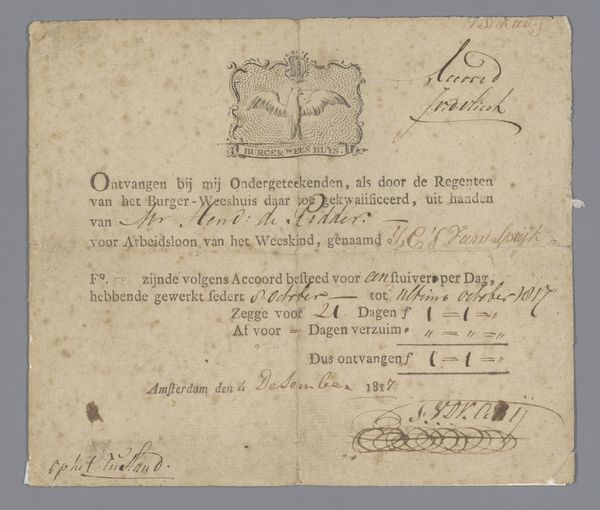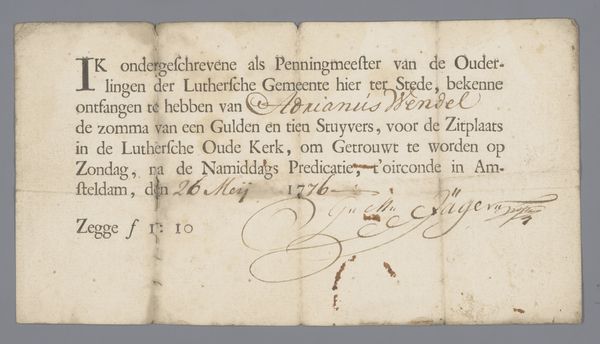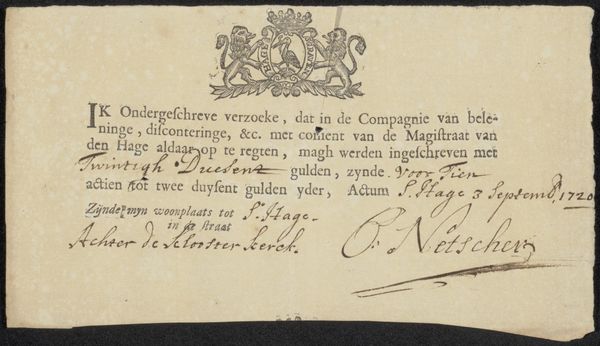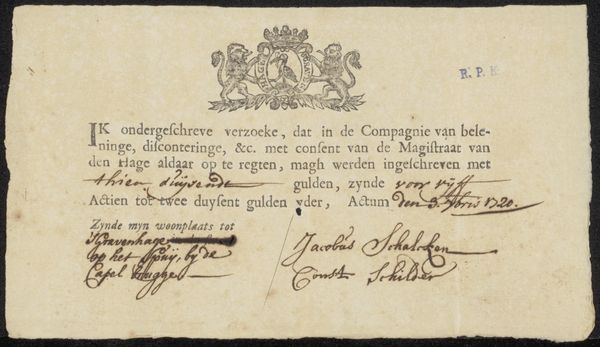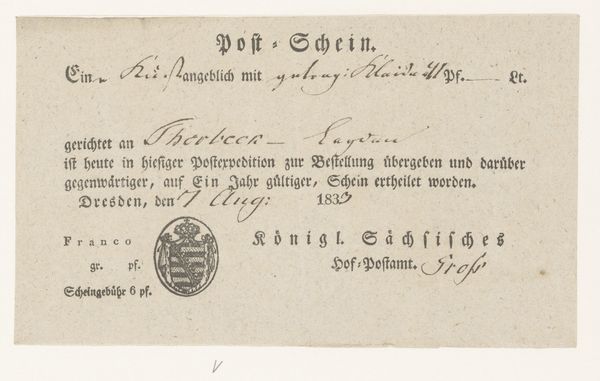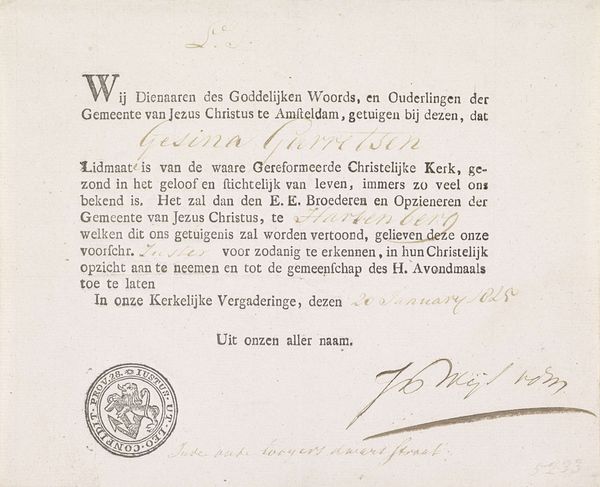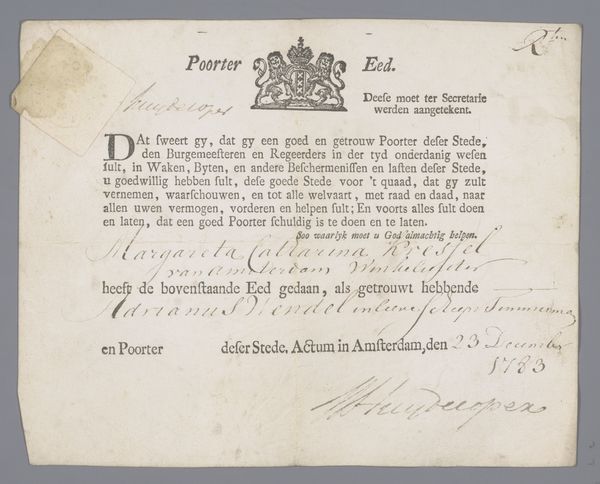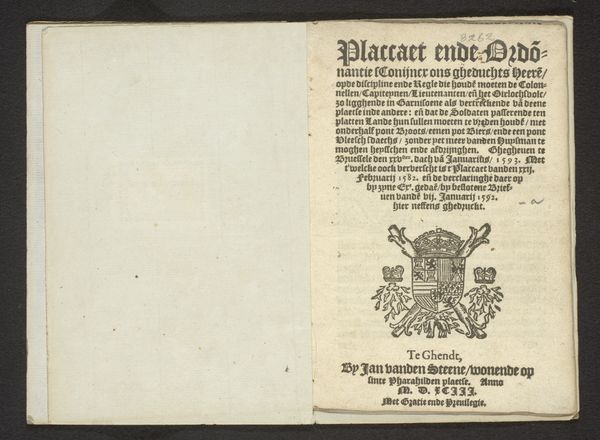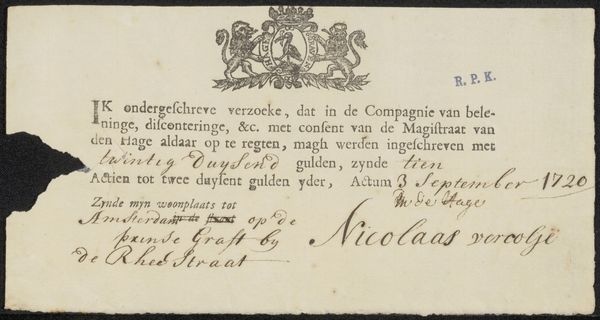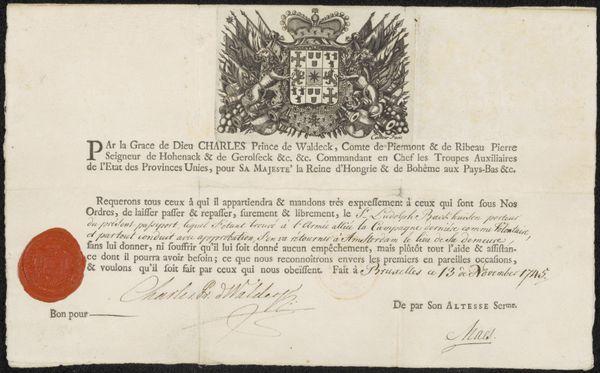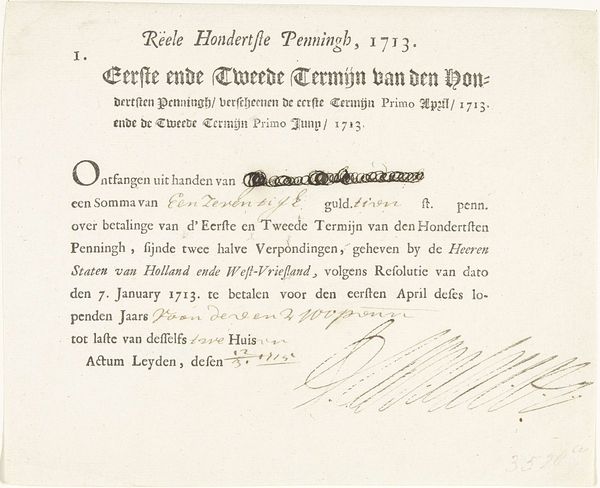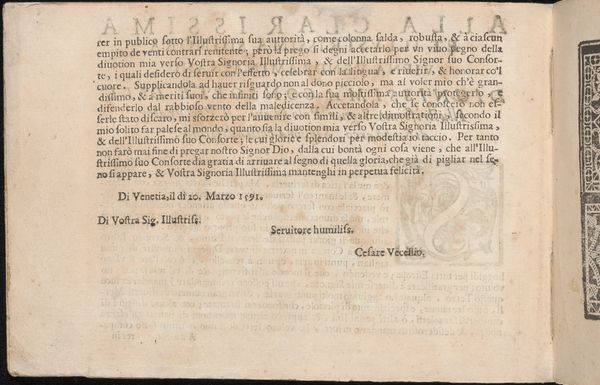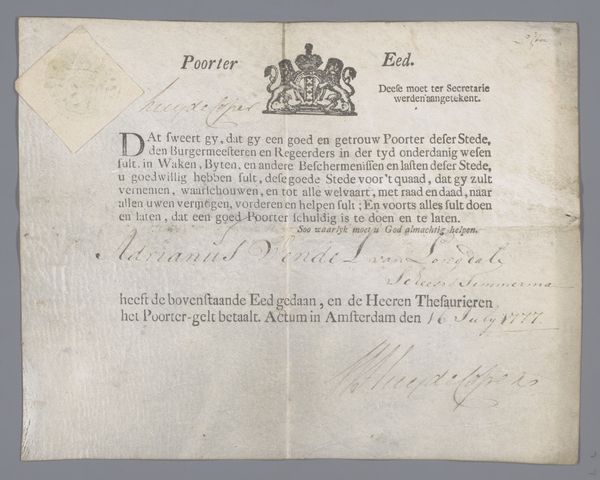
drawing, paper, ink
#
drawing
#
dutch-golden-age
#
paper
#
ink
#
watercolor
#
calligraphy
Dimensions: height 15.2 cm, width 19.7 cm
Copyright: Rijks Museum: Open Domain
Curator: Let’s take a look at "Voor de Armen," which translates to "For the Poor," a drawing attributed to Adrianus Wendel, likely from 1776. It's crafted with ink on paper. What strikes you immediately about this piece? Editor: It has an almost austere quality. The script is very formal and tight, creating a sense of seriousness and, given the material—ink on paper—a kind of fragility, wouldn’t you say? The visible imperfections on the paper feel very intimate. Curator: Absolutely. The Dutch Golden Age calligraphy is precise, yet, the context is compelling. Notice the text above a coat of arms; it speaks to the complexities of charity and class in 18th-century Amsterdam. Documents like these highlight the administration of poverty, which makes them an interesting commentary about institutions of the time. Editor: Precisely. You see the means by which those in positions of authority codified access to relief through what might have seemed, ostensibly, bureaucratic means. The materiality speaks of that: the care that has been put into production to then seemingly ration it. Were pieces like these made en masse, I wonder? What kind of labor went into the many reproduced documents, forms and appeals that were then made? Curator: It’s more likely this piece served as a singular formal pledge relating to assistance or perhaps admittance to an institution; in the 1770s it could be for a newly widowed individual declaring herself as not having the assets for dowry so she might seek assistance. These handwritten forms add an element of character, too: the script would change hand-to-hand adding new dimensions. Editor: I see, and in the repeated and reproduced form itself—a kind of subtle craft. Seeing Wendel's signature humanizes what could have been a cold institutional practice. How do such images complicate, or even critique, notions of “high art?” Curator: By pulling them into the conversation of everyday lives. Images, no matter their intent or medium, operate inside society and therefore reflect on power relations whether intended or not. So here the artist, though largely anonymous otherwise, gives visual form to the machinery of governance at the ground level. Editor: It’s pieces like these, that bring a wider texture to historical narratives. Thank you. Curator: Likewise. Examining Wendel's "Voor de Armen" allows us a rare perspective to engage on the public role of visual expression during periods of societal change.
Comments
No comments
Be the first to comment and join the conversation on the ultimate creative platform.
